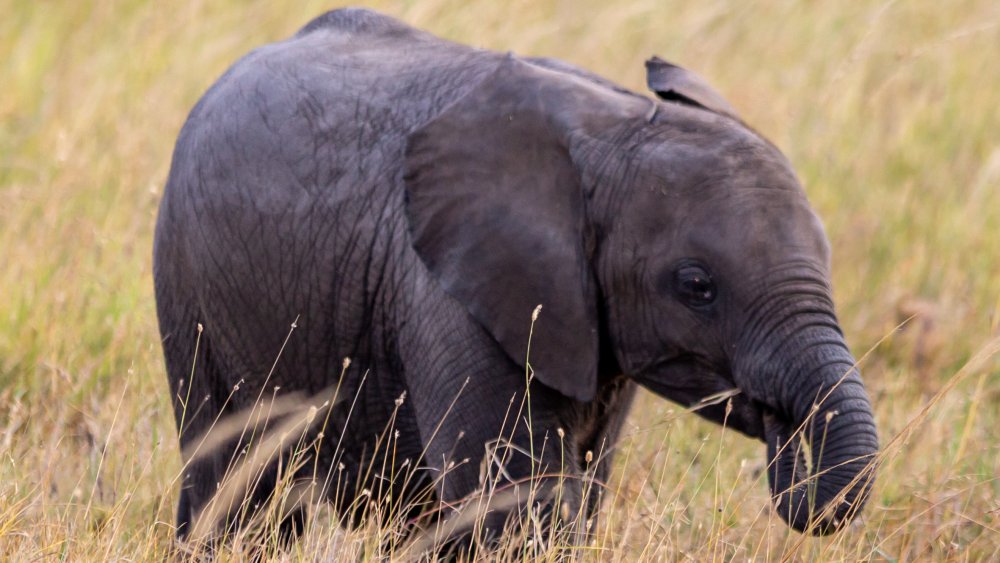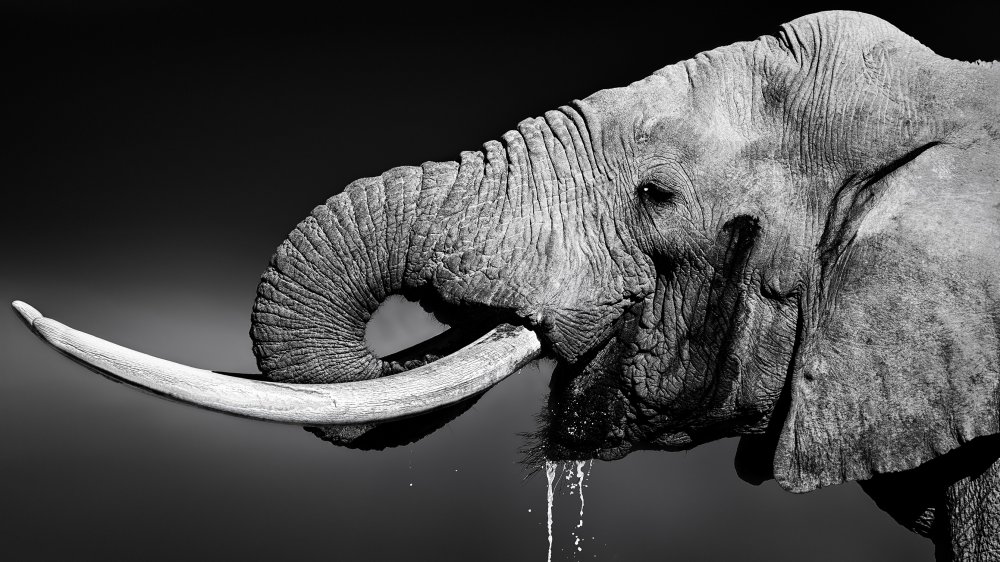This Is Why Elephants Really Eat With Their Trunks
We intuit that trunks are important for an elephant. They obviously are. So when an image of a trunkless baby elephant started circulating around the internet in 2018, Jason Bittel of National Geographic asked the equally obvious question: "Can an elephant survive without its trunk?" Besides being the elephant attribute, trunks are also an incredible piece of biological engineering. "As an adult," Bittel writes, "an elephant's trunk is capable of lifting more than 700 pounds, thanks to an array of some 40,000 muscles. (For reference, humans have just over 600 muscles in our entire bodies.)"
This month, a study led by Maëlle Lefeuvre, a PhD student at the Jagiellonian University in Krakow, studied both the different ways elephants could use their trunk to manipulate food and how each elephant displayed a preference for individual tactics. Behaviors the team noticed included pinching little items between the fingers of the trunk, blowing around an object to clear it of sand or dirt, bundling objects into more compact forms to make them easier to pinch, and wedging an object between the trunk and tusk, either to hold it in place for further manipulation or to keep it away from other prying elephants.
Because of all the intricate work the trunk performs, George Wittemeyer, an elephant expert at the University of Colorado, told Bittel that he found it "highly unlikely" that the baby elephant would survive.
A helping trunk
Joyce Poole, co-founder of the study organization Elephant Voices, held out hope for the calf's survival, however. She reasoned that since the wound had healed and the calf looked well fed, it had suffered the wound a while back but had not experienced starvation. This may be due to it learning how to feed without a trunk or due to other elephants feeding it. According to Natural Habitat Adventures, elephants had been observed breaking their tusks in attempts to lift a fallen elephant, so the possibility is quite real that the herd is raising the injured calf.
In 2008, Lucy A. Bates led a study titled "Do Elephants Show Empathy?" in which it's argued that data shows elephants displaying certain kinds of empathy: "It is obvious from the records we have discussed here that elephants are very sensitive to the distress of others, and remarkably capable of anticipating and preventing such distress. These reports mostly concern the potential distress of calves, and it is mostly relatives who react. ... Nevertheless, as evidenced by a few of our records, adult elephants do sometimes help individuals who are not related to them; thus, not all empathic behaviour may be linked to kinship, and may represent a more generalized response to distress." So it's almost certain that the mother would take care of the calf. Once the calf grows up, however, it is not as clear how long it could survive without its main evolutionary advantage. But there's hope.

